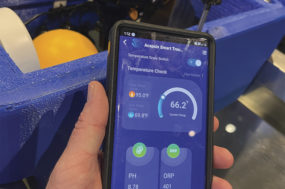You’ve heard the saying: “The captain goes down with the ship,” right? But with all of the safety standards and regulations that exist today, did you ever think that this concept would actually apply to a situation in your lifetime? Until recently, I never thought it would. But all of that changed when the Italian cruise ship Costa Concordia ran ashore and capsized a few months ago. As of this writing, 30 bodies have been recovered, two people are still missing and the cruise liner’s captain, Francesco Schettino, remains under house arrest.
Now, I’m not going to suggest that the ship’s captain should have perished in this tragic, careless accident. But ... it turns out that he actually fled his ship while his passengers and crew were still being rescued.
According to maritime law, the captain isn’t required to literally go down with the ship. However, it is expected that the captain will be the last one off the ship after making sure everyone on board is moved to safety.
Ultimately, the captain has been entrusted with the lives of every person on his ship, and the symbolism of “going down with the ship” communicates the monumental weight that the captain’s decisions and actions carry.
So how does all of this relate to you and your dairy? As the “captain of your ship,” you too, are expected to serve and protect your “passengers and crew.” So how well are you doing that?
You see, most employees look to their bosses for direction, clarity, discipline and support. They expect that their leader is going to do what leaders do ... have a plan, make sound decisions, follow through and hold people accountable for achieving their objectives.
Just like the people on the Carnival cruise trusted the captain to do “the right thing,” your team counts on you to do the same.
And no, your people probably aren’t going to come right out and ask you to lead them. They just expect that you will because you’re already their leader and you hold an elevated position.
In fact, from the very beginning, most of us simply give leaders the benefit of the doubt. We usually don’t question or doubt a leader’s ability, commitment or willingness to lead. Instead, we listen. We follow. We watch. And then ... we judge.
Not only do we judge a leader’s decisions but, more importantly, we judge the way a leader puts these decisions into action to get results. In the end, we judge leaders by the way their actions match their words. And when leaders actually do what they say, we trust them.
Your crew expects you to lead them. They’re not going to ask, and they shouldn’t have to. After all, you are their captain. P D

Tom Wall
President
Dairy Interactive, LLC






